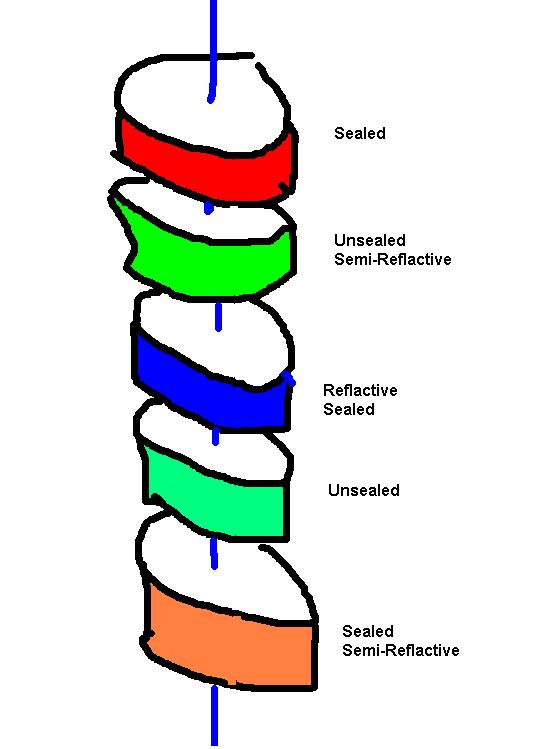Rerurn to Romy the Cat's Site
In the Forum: Audio Discussions
In the Thread: Romy The Cat's new Listening Room
Post Subject: The fiberglass tube dilemmas and my Shish-KebabPosted by Romy the Cat on: 10/13/2010
fiogf49gjkf0d
I am playing with the tube traps and at this point I have a dual feeling about them. They are absolutely phenomenal HF absorbents, in fact much more powerful than any other tools I have heard. They suck HF from the room with a force of a good commercial vacuum cleaner – very effective and intuitively powerful.
However, Sound that tube traps produce is a bit controversial in my view. Tube traps are very powerful HF consumer and the need to be use VERY cautiously, it easy to over dry my room and it need some attention what and how to use the tube traps. Properly used I was able to get very nice HF balance in the room. Did it lead to better sound in my room? Hm, rather it did not. In fact for a first time during many years my room begun to sound like some kind of dealer demo room. Do you remember that generic suffocating, thin sound, with distill bass and hyper-pronounced HF on a background of monotone LF farting? That was always for me a signature of a room with tube traps and it is the direction into which the sound of my room changed. Thinking about tube traps more I conceded that they are no properly designed. That is kind of an audacious statement form a person who few days before did not even used tube traps and who has no assurance that he used them today properly. Still, I think that I am right, below is my further thinking on the subject.
Tube traps are mistakably designed as they tend to deal with a very erroneous assertion that it is possible to feel a listening room with some kind of confused and random bass and then to correct the things with tube traps. Why I say “confused and random bass”? Because this is what 99.9% people get from their standalone, off-the-self speaker with a woofer at the bottom inserted in a random room. Yes, the tube traps do deal with anomalies in the room but by doing it the very much obliterate very fragile and very delicate texture of bass. They kind if insert a very fine file of oil on surface of bass water, eating up all micro dymick of bass. The bass become less problematic but also less impactful and less expressive. It cuts a listener skin like a dull knife – you feel that something is trying to slice you skin but you see no blood. This is very unpleasant feeling. I think the problem that tube traps has is that they are trying to do for bass and I think this is a mistake. The tube traps are super good HF consumers and this is where they need to be.
Remind you that tube traps use the fact the sound in a room create excessive pressure. The tube traps, being sealed, experience the pressure difference between the inside and outside the tube. So, it creates a “wind” from outside of the tube in order to close the low pressure zone inside of the tube. The “wind” blows across fiberglass that “eats” energy of the pressure wave. The larger tubes that lower LF will be eaten. So how to make the tube trap to eat HF but do not touch LF. Here is what I fill my des would work better – the sliced tube trap. What I think need to be done is to slice the tube trap on individual segments and make each segment to act differently. By the fact that segments are small they will not hurt LF. For HF they will act not only as consumer of HF but as smart consumer.

Look at the picture above. We have a battery of small radial sections that do not go a go very low. The segments are all different, some of the sealed and “actively” eat HF, some of them opened, some of them HF reflective, some of them semi-reflective to different degree and the have some free air space between the segments. They are all in the same axis and covered with the same final cloth. I guess this type of tube traps Shish-Kebab will work very well s it will have proper randomizing effect. It would be very interesting to talk with the folks who the tube traps but have you seen any audio manufacture who would comfortably take a criticism about own products and without acting as a psycho?
I still will proceed with my half-tube idea for the ridge wall but I will be using smaller half-paper and experimenting with reflectivity. Most likes will not completely seal them. To my surprise even not sealed they are still very effective. I do feel that there is a special signature of fiberglass HF consumption. What foam eats HF then it does not make Sound “thin” and metallic. It looks like fiberglass does. It might be just the way how and how much fiberglass is used. I will continue to make experiments as the forth with witch fiberglass eats HF is very commendable.
Rgs, Romy the CatRerurn to Romy the Cat's Site